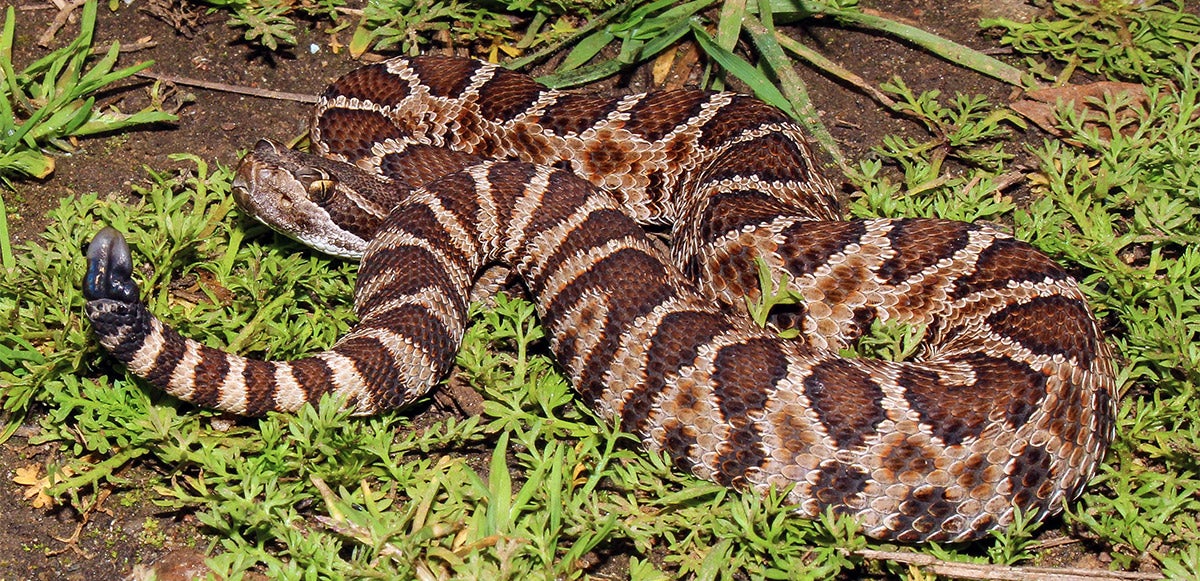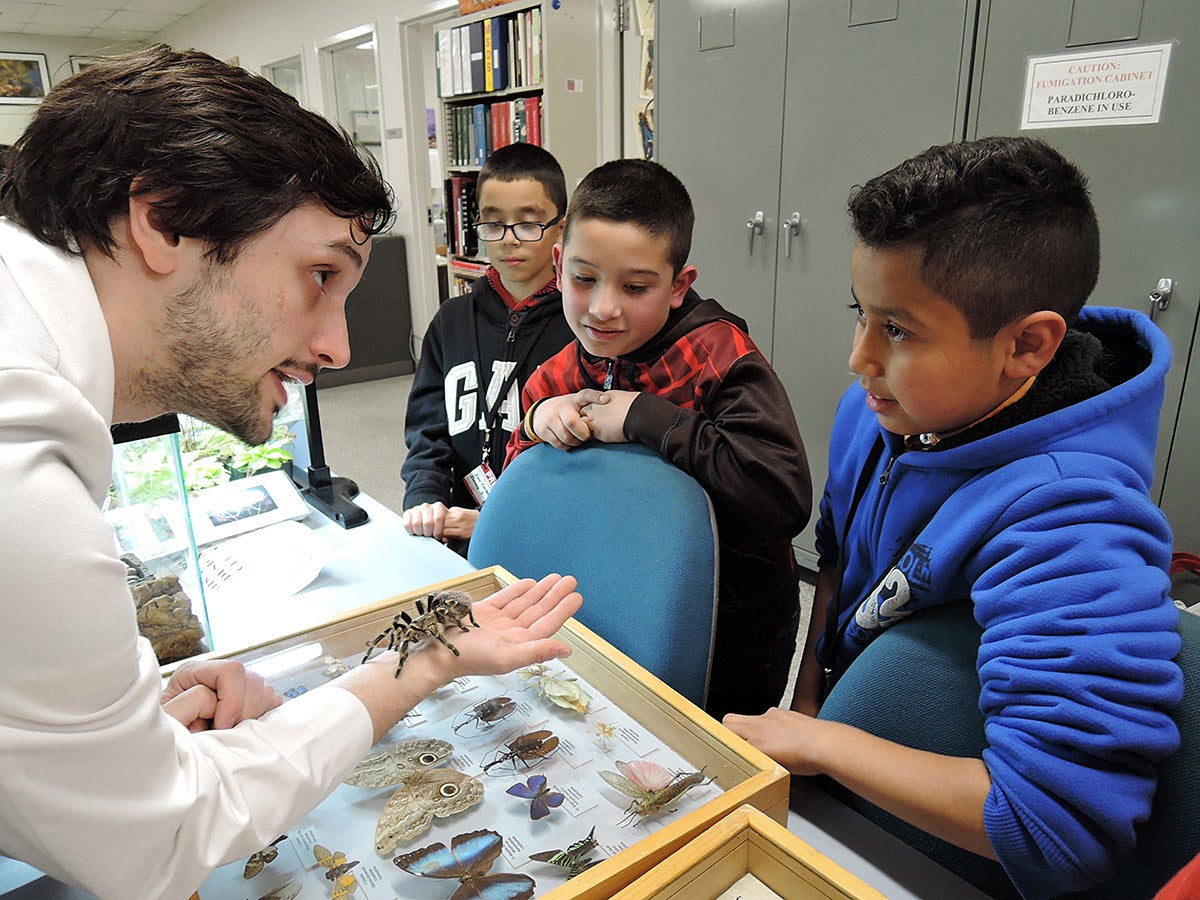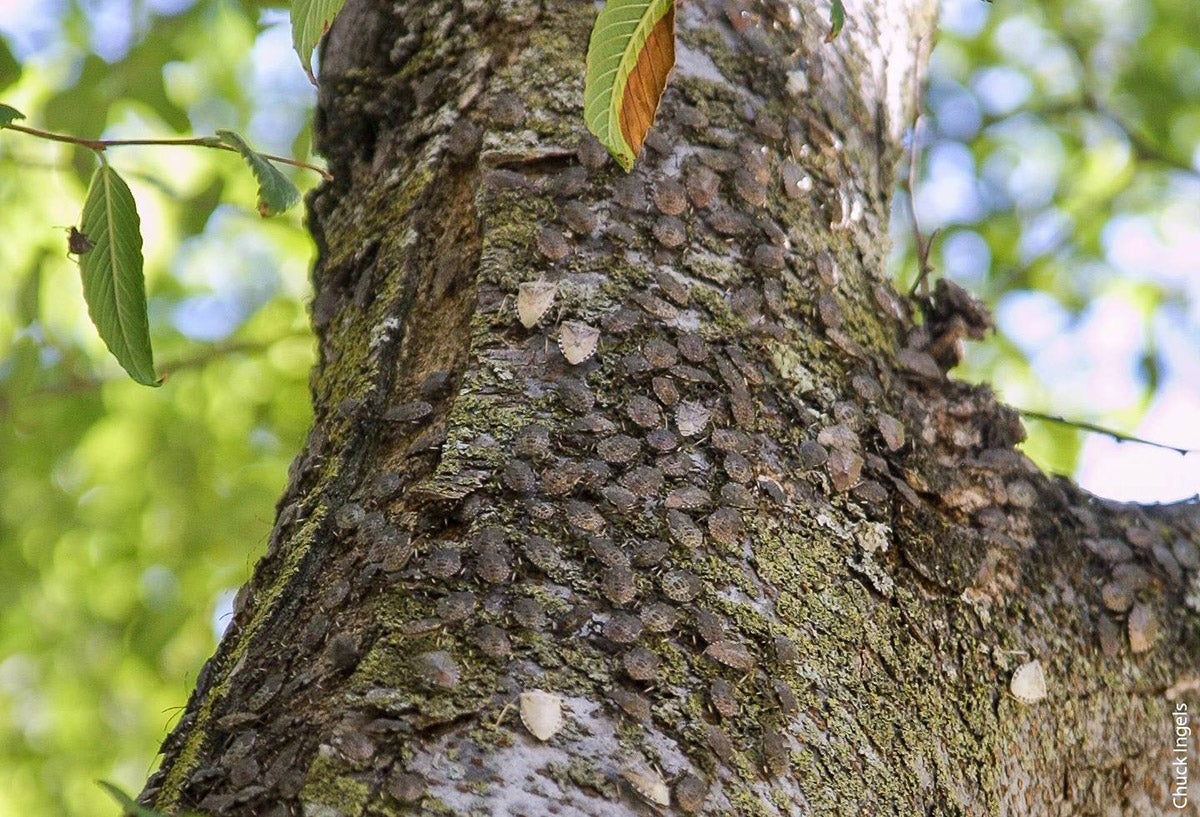Consider the Upsides and Downsides of Having Snakes and Bugs in Your Environment
Summer may mean the emergence of some creepy, crawly (and slithery) critters, but that isn’t always a bad thing, UC Davis experts say. From many-legged creatures commonly found around your home during the summer to legless animals you might see out on a summer hike, here’s what our experts say about the critters of summer — and what our wet winter means for many of them.
Rattlesnakes: Exercise caution

Hot, dry weather suits California’s only venomous snake, the rattlesnake, just fine. And while a wet winter means lots of tall grass for snakes to hunt and hide in, Associate Professor Brian Todd, who studies the ecology and conservation of reptiles and amphibians, says there have been fewer reports of rattlesnakes this year.
“My best guess is that the snakes don’t have to move around much to find food, and so the snakes simply aren't being seen like they are in years where they must roam more widely to find food,” Todd said, noting a booming population of rodents this year. “It’s also possible that several years of drought took a toll on snakes and they will need a year or two to recover.”
But we are still in the height of rattlesnake bite season, which runs from April to October.
"It's best to be aware of one's surroundings and know how to respond when encountering a rattlesnake,” said Mark E. Sutter, an emergency medicine physician and toxicologist at UC Davis and the California Poison Control System.
Sutter recommends hikers wear long pants and boots, stay on trails, be wary of picking up rocks and sticks, and do not touch or disturb a snake, even if it appears to be dead. If you are bitten, seek immediate medical attention, but avoid folk remedies such as tourniquets. UC Davis Health has shared more tips and information on preventing snake bites.
More than 300 people are treated for rattlesnake bites in California each year, and dogs who nose around in tall grass or wood piles are also at risk.
Vaccines are available for dogs, but UC Davis veterinarian Karl Jandrey says that’s no substitute for emergency care.
“A rattlesnake vaccine doesn't necessarily prevent the need for medical attention or treatment,” Jandrey said.
UC Davis experts recommend keeping your dog on a leash, staying on trails and using a walking stick to rustle brush along trails to alert snakes of your presence. They don’t want to run into you, either. More tips to keep dogs safe from snakes and other summer dangers are available on the One Health blog.
Why you shouldn't fear spiders

The wet winter meant lots of insects, which now means lots of spiders to eat them. While not everyone enjoys having these arachnids around the house, remember that they’re the “good guys” that keep down other pests, said Professor Lynn Kimsey, director of the Bohart Museum of Entomology.
“Humans love to fear what they don’t know anything about,” she said, noting that Northern California doesn't have any dangerous spiders. Even the notorious black widow is extremely unlikely to “waste” any of its precious venom on a human because it doesn't see a human as a likely meal, she said.
“You have as good a chance of being hit by an asteroid as being bitten by a black widow,” Kimsey said. She said most black widow bites happen when a person unknowingly crushes one, leading the spider to bite reflexively — usually without venom.
She said the Bohart museum seeks to teach people to better understand spiders and other insects, so they won’t fear them. She’s always happy to see children visit the museum and handle furry, harmless tarantulas.
“Kids should be playing with this stuff,” she said.
Wasps and yellowjackets: Know the difference
It’s too late to do much to control populations of wasps and yellowjackets (traps need to be set out in early spring to keep populations from growing), but it’s still important to know which ones should cause concern.
Paper wasps have a more slender waist and form open nests in eaves and on walls. They usually ignore humans and aren't a cause for concern, Kimsey said.
On the other hand, yellowjacket wasps, which have brighter yellow stripes and aren't quite as thin as other wasps, commonly build nests in underground rodent holes. They’re sometimes called “meat bees” for their love of hamburgers and other meat. They’ve been reported in greater numbers this year, according to the Sacramento-Yolo Mosquito & Vector Control District.
If you spot a yellowjacket nest, stay away and call a professional exterminator. While most wasps live in small numbers and are mostly harmless, yellowjacket nests can be home to thousands of aggressive insects.
“If you get near a nest, they’ll attack in numbers,” Kimsey said. “Get a professional to deal with it.”
Mosquitos: Out of sight, out of mind
California’s central valley would be overrun with mosquitos if not for abatement districts, regional government agencies that work to control the bugs’ numbers, Kimsey said. Locally, the Sacramento-Yolo Mosquito & Vector Control District culls mosquito populations with insecticide that only affects mosquitos, and by distributing mosquito-eating fish. The agency also encourages preventative measures by the public.
Kimsey said the only downside of this arrangement is that when those abatement districts do their jobs well and there aren't many mosquitos around, people tend to forget someone is working hard to keep it that way.
“Life would be hell without them,” she said.
She also said research institutions like UC Davis play a vital role in mosquito control by testing for new species that can stow away in materials and products being shipped to California. If officials only look for species they know are already here, they could miss a new species until it’s already established a large population, she said.
High temperatures keep down Sacramento stink bugs

Another benefit of a hot summer: it keeps down the stink bugs that have started an infestation in Sacramento, according to UC Extension researchers. Brown marmorated stink bugs originate from Asia and were accidentally introduced to the US in the 1990s, becoming a serious agricultural and domestic pest in parts of the country. In Sacramento, they have attacked community gardens, sucking fruit and vegetable crops dry.
But it turns out that spells of triple-digit heat are bad news for the bugs: A few days over 100 degrees put a significant dent in the population. Entomologists from UC Extension and UC Davis are now running lab tests on how vulnerable the bugs are to hot weather.
Cody Kitaura is a content provider and strategist in Strategic Communications. His colleague, science content provider Andy Fell, contributed to this report.